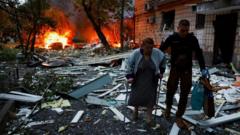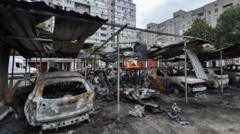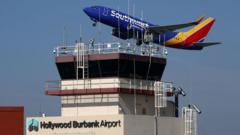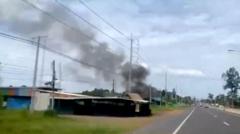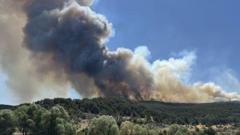Following a devastating mid-air collision in Washington, DC, Transportation Secretary Sean Duffy reported significant understaffing in air traffic control at the time of the incident. Investigators are evaluating the contributing factors, including the flight protocols of military operations during peak traffic hours.
Investigation Reveals Staffing Shortages in Air Traffic Control Amid DC Collision
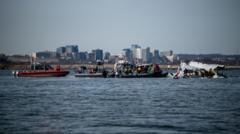
Investigation Reveals Staffing Shortages in Air Traffic Control Amid DC Collision
Officials acknowledge "abnormal" staffing levels during the mid-air crash that resulted in 67 fatalities, prompting a deep review of air traffic management practices.
Air traffic control staffing levels were reported as "not normal" during the tragic mid-air collision involving a military helicopter and a passenger plane in Washington, DC, which claimed the lives of 67 individuals. Transportation Secretary Sean Duffy confirmed that the situation at the Reagan National Airport tower was less than optimal at the time of the crash, as one air traffic controller was overseeing both helicopter and airliner traffic alone, a task typically requiring two personnel.
Duffy appeared on FOX News Sunday, expressing his commitment to thoroughly reviewing the FAA's role in the incident. He noted, "I'll take the Federal Aviation Administration (FAA) at their word that it wasn't normal," while highlighting concerns regarding the adequacy of traffic direction by controllers amidst a consolidation of staffing that occurred just an hour prior to the collision. This unexpected consolidation has raised questions about operational procedures followed during the incident.
Reports from the National Transportation Safety Board (NTSB) indicated that the helicopter involved was flying at around 200 feet — the maximum altitude permitted for helicopters in that vicinity. Duffy expressed concerns over the timing of the helicopter's flight, questioning the decision to operate during peak evening hours instead of a quieter period later in the night. His remarks underscored the dual necessity for military preparedness and air travel safety.
Investigation efforts are underway, with multiple factors, including the helicopter's altitude and traffic management practices, under scrutiny. The crash involved an American Airlines flight with 64 passengers onboard and an Army Black Hawk helicopter populated by three soldiers, with no survivors reported.
Family members of the victims have begun to gather at the crash site, seeking answers in the wake of this catastrophic event. Duffy identified a broader staffing crisis impacting air traffic control nationwide, asserting that over 90% of facilities operate below FAA-recommended staffing levels. He remarked that air traffic controllers are experiencing significant stress due to overwork, while acknowledging, "That's no excuse; it’s just a reality of what we have in the system."
Efforts are underway to train new controllers, with Duffy suggesting a comprehensive plan will be announced to address staffing challenges, although he cautioned that immediate solutions cannot be swiftly implemented. The collective focus remains on learning from this incident to enhance air traffic safety and prevent future tragedies.




